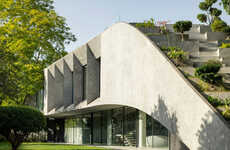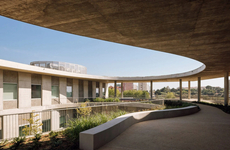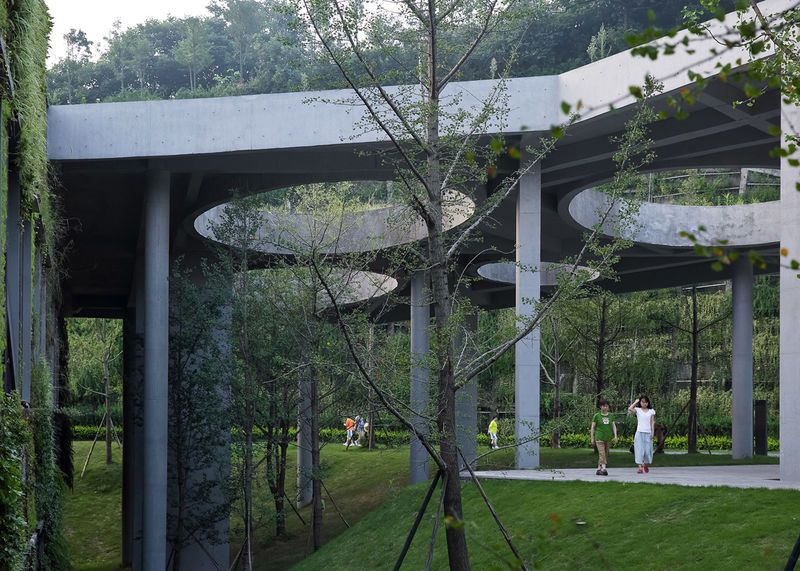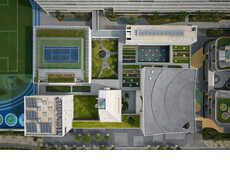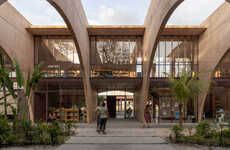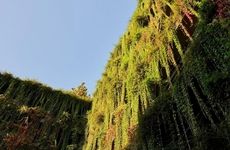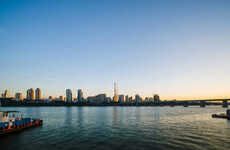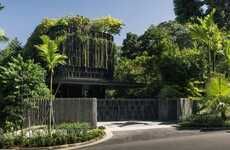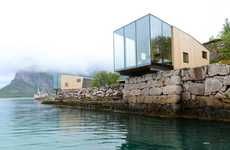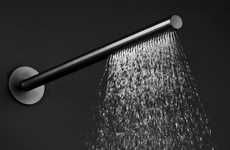
This Community Center is Hidden Beneath a Sprawling Grass Roof
Katherine Pendrill — October 28, 2015 — Eco
References: vectorarchitects & dezeen
'Vector Architects' designed a beautiful community center that is hidden beneath a thick grass roof. The process of integrating a new building into a natural environment can be a tricky task for architects. This modern community center demonstrates that it is possible to design buildings that complement the natural landscape.
The 'Chongqing Taoyuanju Community Center' is located in a mountainous part of southwest China. In order to help the building blend into the natural environment, the architects decided to build a grassy rooftop canopy. They began by splitting the area up into three volumes, each of which serves a different function for the local community. The sprawling grass roof connects each of these steel structures and helps conceal the concrete exterior. The structures are also surrounded by plants, which helps to further hide the man-made structure.
The plant-covered community center represents a unique balance between nature and modern design.
The 'Chongqing Taoyuanju Community Center' is located in a mountainous part of southwest China. In order to help the building blend into the natural environment, the architects decided to build a grassy rooftop canopy. They began by splitting the area up into three volumes, each of which serves a different function for the local community. The sprawling grass roof connects each of these steel structures and helps conceal the concrete exterior. The structures are also surrounded by plants, which helps to further hide the man-made structure.
The plant-covered community center represents a unique balance between nature and modern design.
Trend Themes
1. Natural Architecture - Integrating natural elements as a fundamental part of modern architecture can improve the quality and aesthetic of environmentally friendly buildings.
2. Green Roofs - Use of green roofs in modern architecture provides opportunities for ecological sustainability and sustainable urbanization.
3. Biophilic Design - Interweaving natural forms into the design of urban structures can help to establish a connection between people and the natural world.
Industry Implications
1. Architecture - Architects and designers can utilize natural architecture to create sustainable and durable buildings.
2. Landscaping and Horticulture - Green roofs can help promote ecological sustainability in urban areas and present opportunities for creating attractive outdoor spaces.
3. Urban Planning - Green roofs and biophilic design can provide an opportunity to implement more sustainable and livable urban environments.
4.7
Score
Popularity
Activity
Freshness



